The Zephyr Force Racing Drone from Kyosho is a beginner friendly quadcopter aimed at anyone aged 6 or above, looking for a fun drone to fly either indoors or out. What makes this drone unique to the rest, is its pistol grip style transmitter which, first-time droners may find more intuitive but seasoned drone pilots may also find a fun challenge.

Unique Pistol Grip Style Transmitter
This unique and rather interesting choice of transmitter (commonly used for controlling RC Cars) makes the Zephyr Force stand apart from the crowd. As an experienced drone pilot with many years of using the traditional style controller with two analogue inputs, I was at first, very dismissive of this choice of controller for a drone, but after just one flight I quickly changed my mind as I found it a fun challenge to get used to this different way of operating. The benefit of using this pistol grip transmitter is that there are only 2 control inputs to manage instead of the usual 4, making it less daunting for first time flyers.
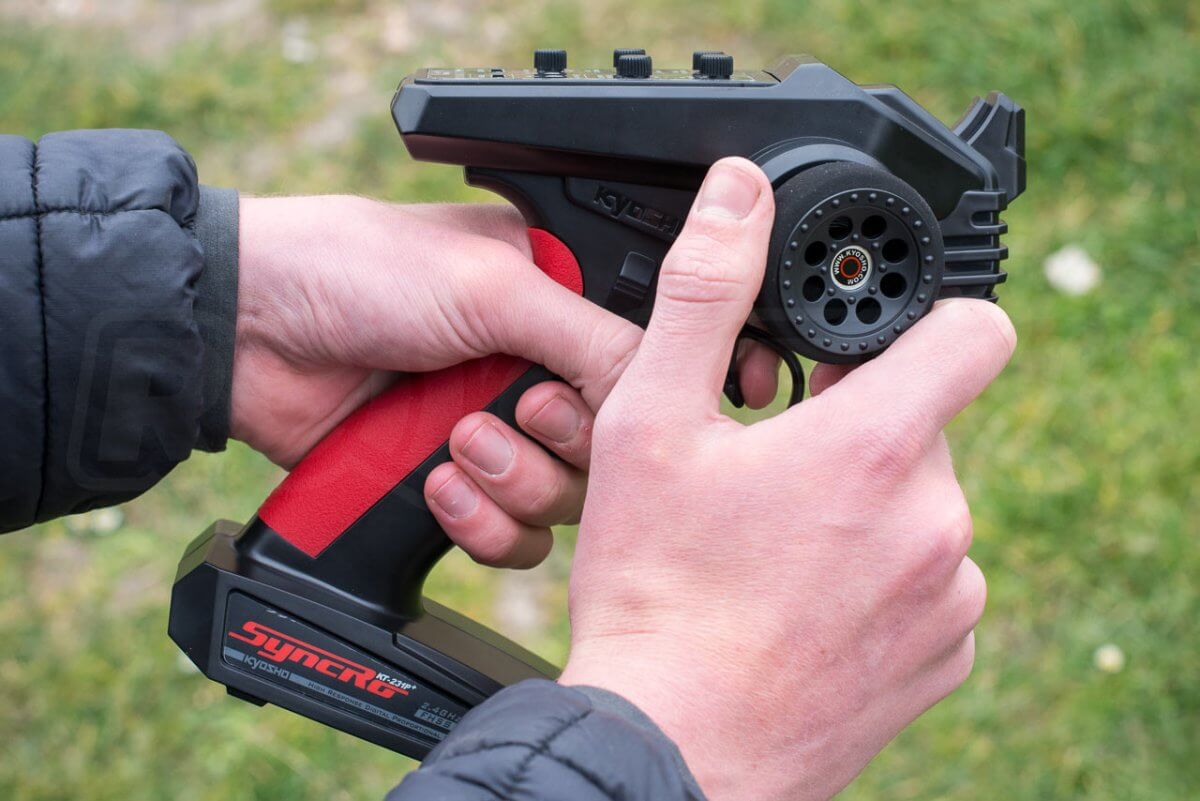
The controller features a full array of trim and dual rate knobs to help tune the aircrafts performance and flight characteristics to your preference.

To power the transmitter, all you need are 4 AA batteries (not included).
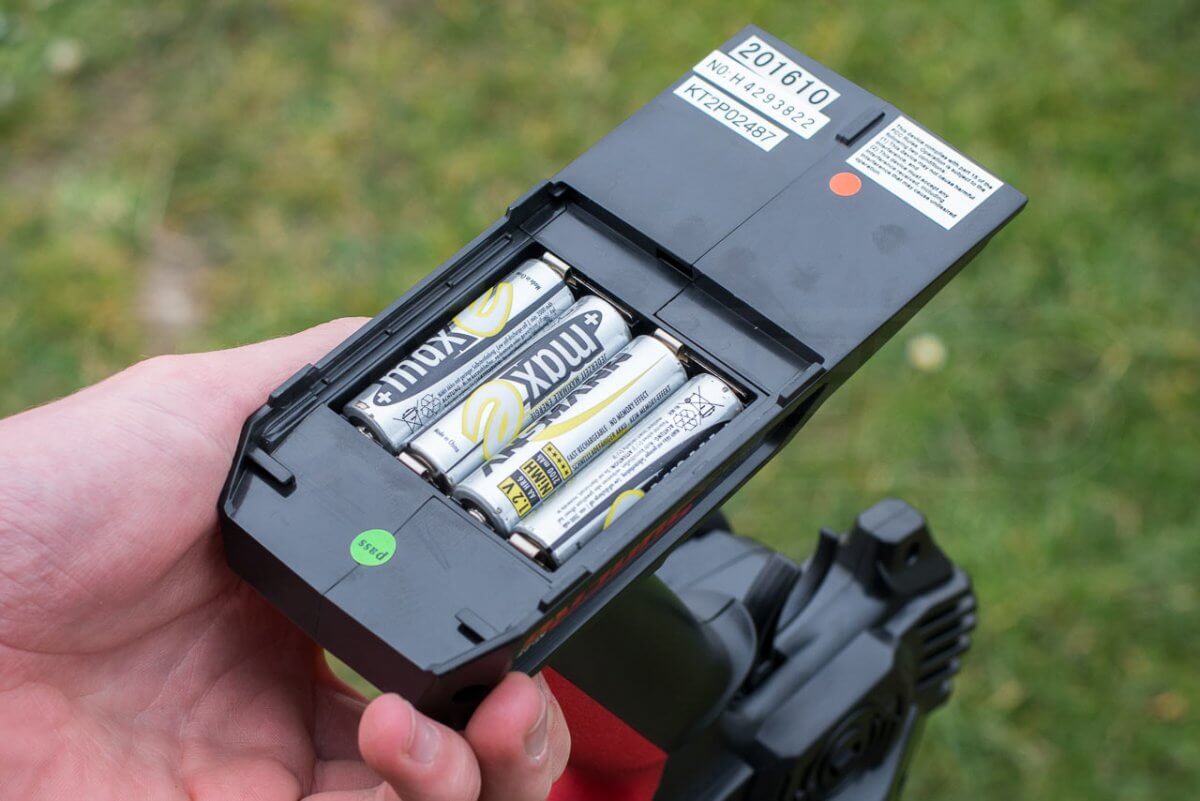
Good for Indoor and Outdoor Flying
Thanks to it’s propeller guards, this drone is safe to fly indoors as well as outdoors without having to worry so much about crashing into things and causing damage to your living room furniture!
If you wanted to fly outdoors and are not so worried about crashing, you can remove these prop guards which will in turn, give you slightly more flight time.
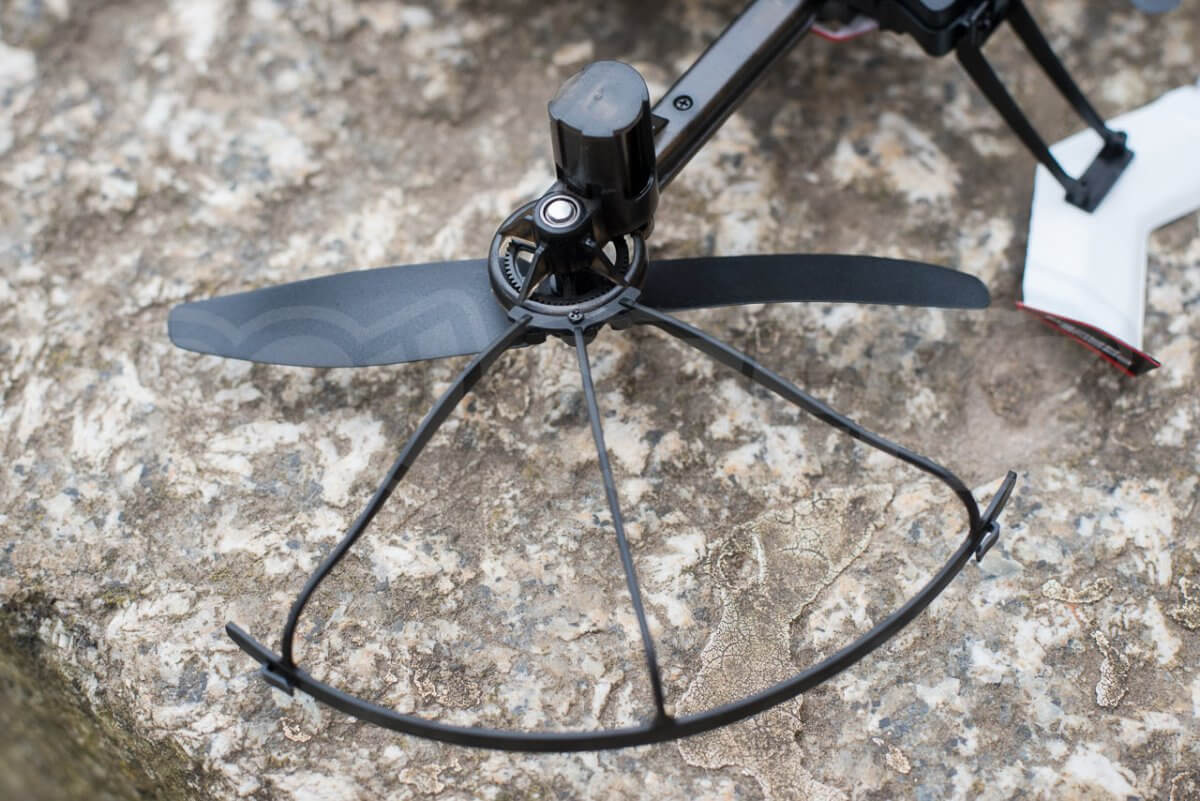
How Do I Fly It?
Thanks to the Pistol Grip Style transmitter, there are only 2 controls to manage, forward and backward which is controlled by the trigger and then the yaw (rotation/orientation of the aircraft) which is controlled by rotating the wheel left or right.
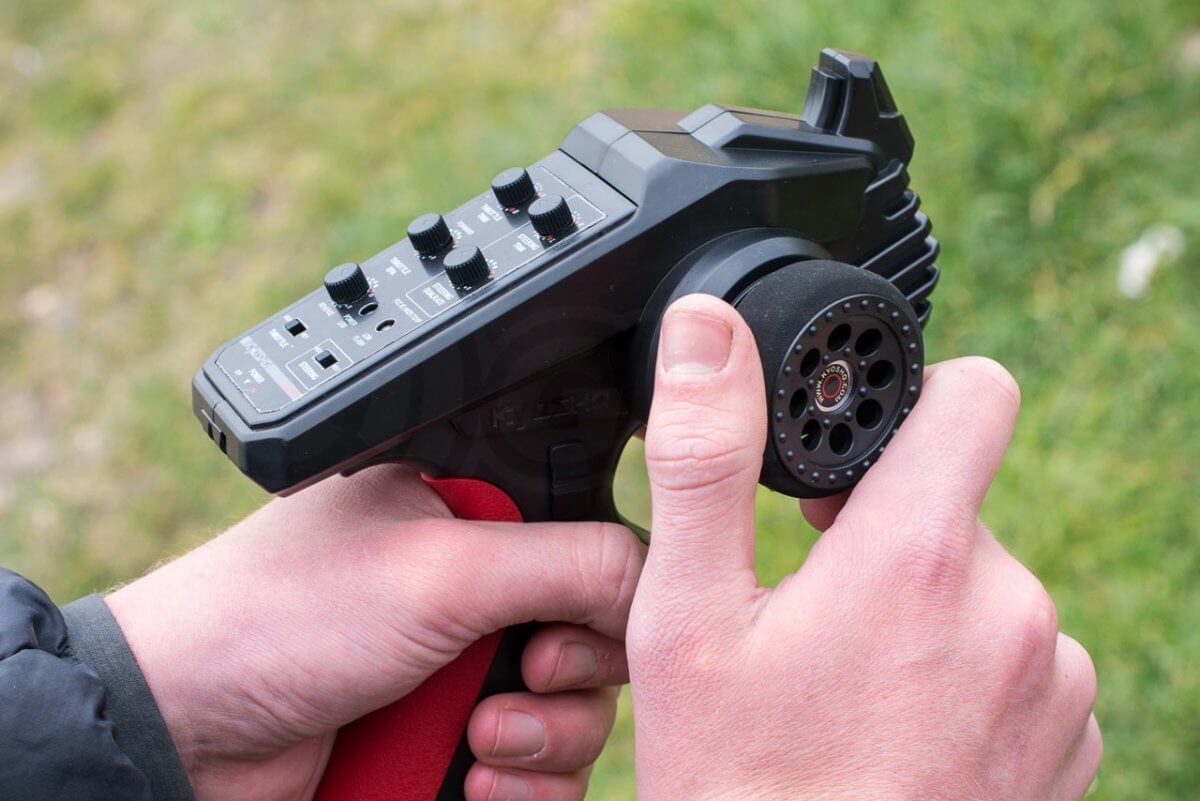
Altitude
Altitude is selected using the 3 position slider, convenintently positioned above your thumb (see below), which autonomously maintains a height of either 35cm or 60cm. It uses barometric and ultrasonic sensors on the underside of the aircraft to calculate and hold it's height, resulting in one less thing to monitor and control for first time flyers!

Throttle
As per using this kind of controller for RC cars, the trigger controls the forward and backward movement of the drone.

Steering
Unlike traditional controllers where you can control the bank/roll of the aircraft as well as the yaw, with this you only have control of the yaw (rotation) to change the heading of the drone. This is done by rotating the wheel on the side of the controller.

Arming
Not being one to read a manual before using a new product, this one stumped me and I had to consult the instruction manual provided. Before launching the drone, you first need to hold in the trigger and rotate the wheel full lock left. The LEDs on the arms will then turn from green to red, at this point you can then start up the motors by flicking the 3 position switch into the middle or top position depending on what height you want it to fly.
Flight Modes
Again, only after consulting the manual did I realise there are two different speed modes! By default, the craft is in beginner mode but by long pressing the A button on the aircraft, you can switch to 'Active' mode which ups your max speed and makes the steering more sensitive.
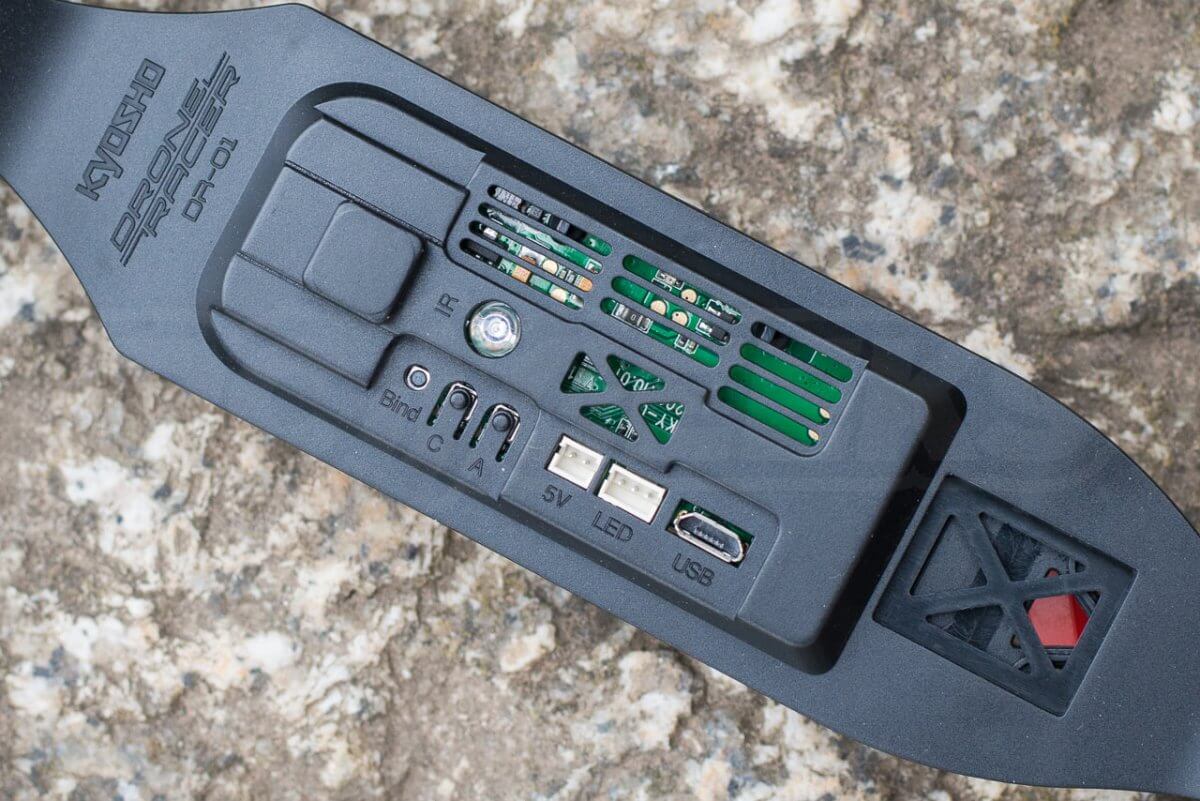
How Fast Is It?
My only real qualm with the drone is that it calls itself a racing drone which implies it is fast and capable of reaching race drone speeds. I haven’t done an official speed test but i’d say it doesn’t top much faster than 10mph in beginner mode or 15mph in expert mode. This may make it ok for racing a person but in no way is it able to compete with the likes of FPV racing drones that can fly in excess of 70mph with way more control and agility.
Flight Time and Charging
I was pleasantly surprised with the flight time. Even outside (with almost no wind) I was able to achieve a comfortable 8 minute flight time which is more than I expected considering it uses brushed motors and a single cell, 1000mah battery.
Expect shorter flight times if you enter into Active mode as you'll be flying faster thus draining the battery quicker.
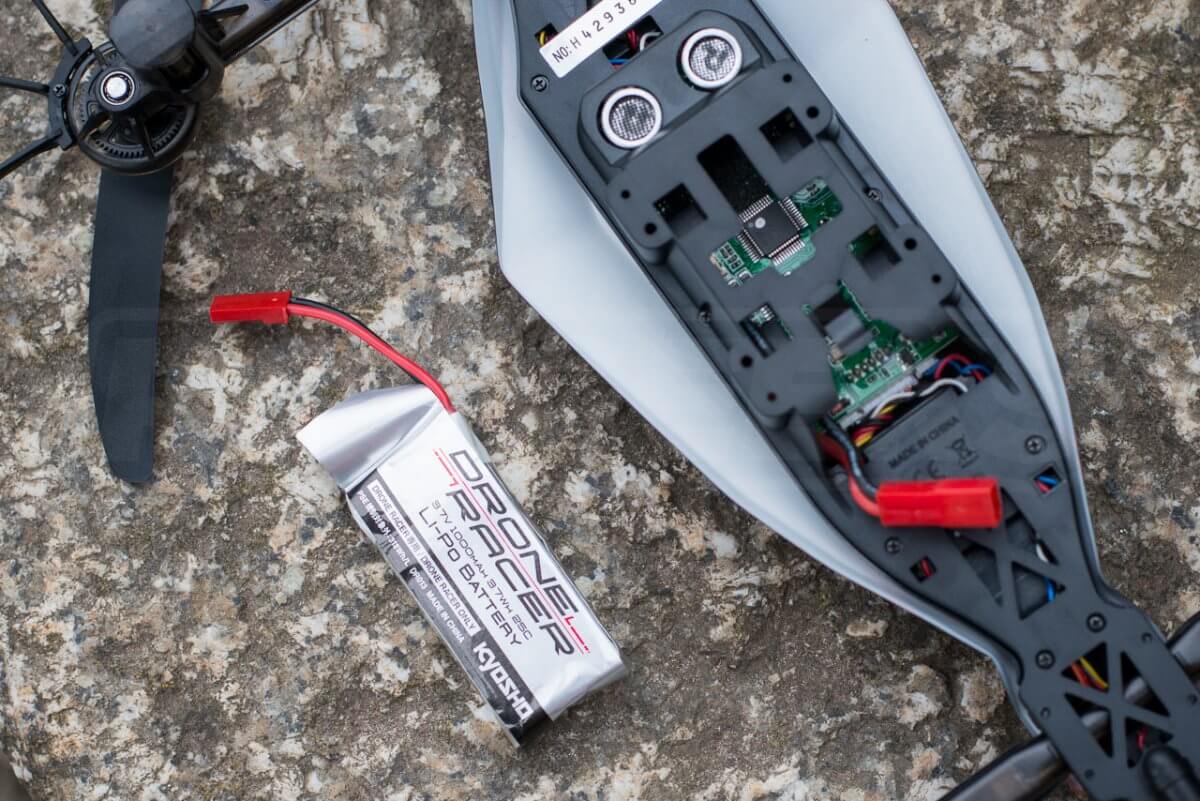
To recharge, it was simply a case of removing the LiPo battery from the aircraft and plugging it into the USB charger. It features a single red LED to indicate its charging status. Although it’s not a fast charger (1-2 hours), the benefit of using a USB charger is that you can charge it from a portable power pack or any other USB outlet.

Drone Racing Setting Manager
Kyosho have released a companion programme for the Zephyr Force which allows you to hook up the aircraft to your Windows PC or Android device via USB to adjust the drones parameters, update firmware and calibrate sensors.
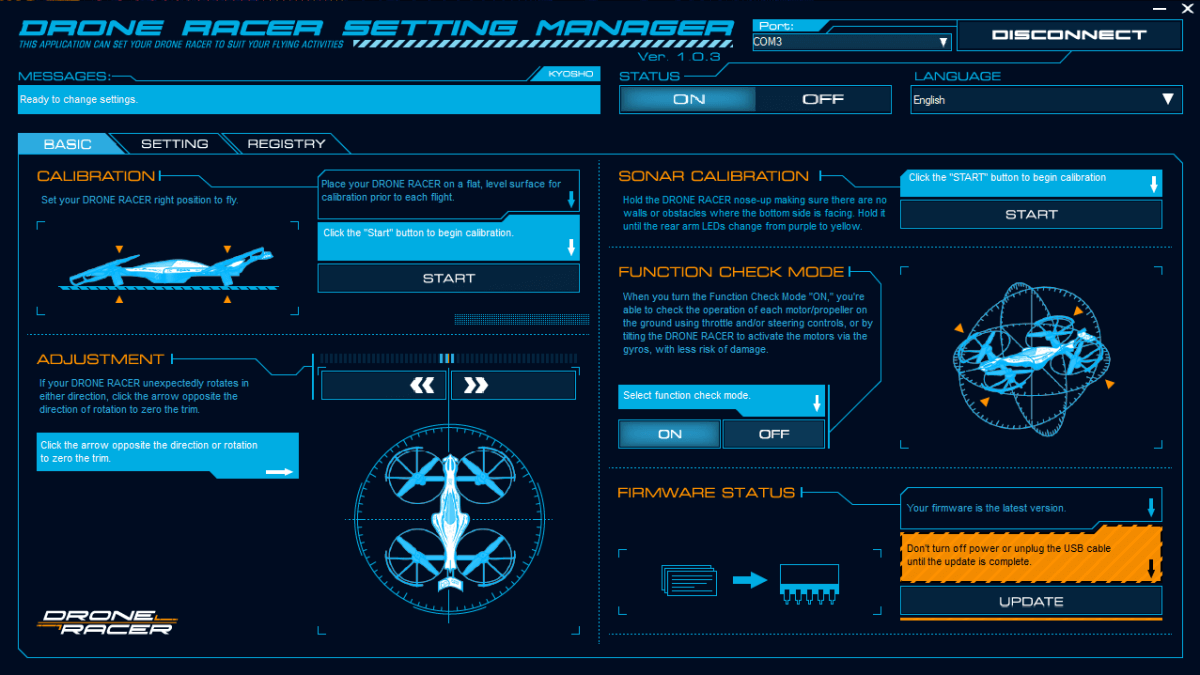

Fail Safes
Unlike some of the higher end drones that have GPS functionality and are able autonomously return the drones take off point, this drone will instead lower itself until it lands then cuts the motors. This will only happen in the case of the transmitter turning off of going out of range, giving you the peace of mind that it won't run away from you!
If the aircraft goes past a certain angle (around 70 degrees), which would only happen in the case of a crash, the motors immediately stop.

What’s In The box?
- Zephyr Force Racing Drone
- 1000mah 1s LiPo Battery
- Controller
- USB Charger
- 4x Spare propellers
- 8x Arm holders
- Pinion gear remover tool
- Mini USB cable
- Instruction Manual
Note: You will need 4x AA batteries to power the transmitter. You will also need a small phillips screwdriver to remove the propeller guards.
Where Can I Buy it?
RC Geeks now stocks the Kyosho Zephyr Force Racing Drone, which you can buy today and have it delivered with free next day delivery!
What Are the Alternative that RC Geeks Sell?
As this drone is pretty unique in terms of how it's controlled, it’s hard to give close alternatives, but if you’re in the market for a cheap, first drone that is a lot of fun and is Ready To Fly out of the box, I'd also recommend checking out the Mario Kart Quadcopter or if you're a bit more confident on the controls, check out the Makerfire Mini FPV Drone Combo.



































